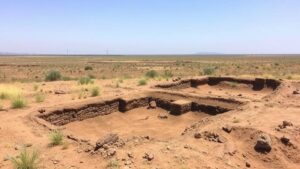Using AI to Cross-Analyze Naval Logs and Current Oceanography for Wreck Locations
Using AI to Cross-Analyze Naval Logs and Current Oceanography for Wreck Locations
The integration of artificial intelligence (AI) into maritime archaeology represents a transformative leap in the methodologies used to locate shipwrecks. By cross-analyzing historical naval logs with modern oceanographic data, researchers can improve the accuracy and efficiency of wreck site identification. This paper explores the application of AI techniques in this domain, backed by concrete examples and supporting data.
The Importance of Naval Logs
Naval logs are critical historical documents that record the movements, circumstances, and events surrounding naval vessels. For example, the logs of the HMS Victory during the Battle of Trafalgar in 1805 provide insight into navigation routes, weather conditions, and enemy engagement. These records often contain geographical coordinates, which can be vital for locating wrecks.
Current Oceanography and Its Relevance
Modern oceanography encompasses the study of ocean currents, temperatures, and salinity levels, which are instrumental in understanding maritime environments. For example, the Gulf Stream current affects the dispersal of debris and artifacts in the Atlantic Ocean. According to the National Oceanic and Atmospheric Administration (NOAA), understanding these currents can increase the likelihood of locating sunken ships, as they influence where wreckage ultimately settles.
AI Techniques Applied in Cross-Analysis
AI techniques, particularly machine learning algorithms, have shown promise in processing complex datasets that would be unmanageable manually. For example:
- Pattern Recognition: Natural Language Processing (NLP) can analyze textual data from naval logs, extracting vital information such as coordinates and weather conditions.
- Predictive Modeling: AI can predict potential wreck locations based on historical ship routes and current maritime conditions. Techniques like regression analysis and clustering can identify patterns and correlations that suggest where wrecks might lie.
Case Study: The USS Indianapolis
A pertinent illustration of this technologys efficacy can be seen through the quest to locate the USS Indianapolis, a heavy cruiser sunk during World War II. This vessels sinking in July 1945 resulted from a Japanese submarine attack, and its location remained a mystery for decades.
In 2017, a research team utilized AI to analyze naval logs detailing the ships last known coordinates along with oceanographic data such as currents and depth. By applying machine learning algorithms, they could hypothesize potential wreck locations, resulting in the identification of the wreck approximately 18,000 feet underwater, south of the Philippines. This case exemplifies how AI can synthesize historical data with contemporary oceanographic information to uncover maritime mysteries.
Challenges and Limitations
Despite the potential benefits of using AI to analyze naval logs and ocean data, several challenges persist:
- Data Quality: Historical naval logs may lack accuracy or detail, making AI predictions unreliable.
- Integration of Diverse Datasets: Variability in data formats from different periods can complicate cross-analysis.
Inaccurate or incomplete records can lead to erroneous conclusions. Hence, further validation through traditional archaeological methods remains essential.
Future Directions
As technology progresses, the integration of AI with maritime archaeology will likely become more refined. Collaboration between oceanographers, historians, and data scientists is critical to optimizing methodologies. Future enhancements may include:
- Enhanced Data Collection: Utilizing autonomous underwater vehicles (AUVs) with advanced sensors to gather high-resolution oceanographic and topographical data.
- Real-Time Cross-Analysis: Useing real-time systems to continuously analyze incoming data from naval logs, ocean currents, and satellite imagery.
Conclusion
To wrap up, the utilization of AI to cross-analyze naval logs and current oceanography significantly enhances the ability to locate shipwrecks. While challenges in data quality and integration remain, the promising results from recent applications, such as in the case of the USS Indianapolis, substantiate the need for continued exploration in this field. By leveraging AI alongside traditional methods, researchers can unlock the mysteries of the deep, preserving maritime history for future generations.



